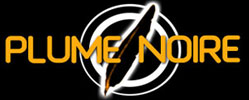
|
|
Edward Norton is Will Graham, the FBI profiler who put Hannibal Lecter (Anthony Hopkins) behind bars. Graham is pulled out of retirement by his former boss, Jack Crawford, (Harvey Keitel) to catch a serial killer, Tooth Fairy (Ralph Fiennes). Graham will meet again with Lecter, enrolling his help to solve the case. Film Cannibalism Red Dragon is shot in desaturated colors that give it a gritty look. Despite being a prequel, it plays like a sequel as it tries to recreate the atmosphere and chills of the Silence of the Lambs. Brett Ratner, better known for his contribution to grotesque cinema (Rush Hour 1 & 2, Family Man), surprises here with tight direction. He holds his ensemble cast pretty well, without letting the actors outperform each other, and he dares to push the envelop in terms of cruelty and nudity with the Fiennes character. The last third of the movie is even tense. Unfortunately, Red Dragon looks like the work of a copycat, as Jonathan Demme's shadow is omnipresent in Ratner's direction. In addition, the fact that Harris' first two novels are so similar—an FBI agent enlists Lecter's help to catch a serial killer—defuses any potential for a real exciting movie. Red Dragon vs. Manhunter Red Dragon is a straightforward academic film that lacks Manhunter's visual style and symbolism. While some details like the use of blue tones are reminiscent of the cinematographer's work in Manhunter, we are never close to the estheticism brought by Mann's vision, making Red Dragon looks like an average creepy thriller. The picture always stays on the surface, without trying to dig under the plot. Except for the tattoo of the dragon and the sleeping tiger that symbolize Tooth Fairy, the film remains in 1st degree entertainment mode. To the contrary, Michael Mann's film was rich in metaphors. The filmmaker used space and buildings as reflections of the characters' state of minds. The ocean referred to Graham's peaceful state of mind, the big houses were a window appealing to Tooth Fairy's voyeurism and Lecter was held in a cold and white hospital-like cell representing the purity of his insanity. The Tooth Fairy played by Tom Nooman was a mentally challenged and tender monster who looked like Frankenstein, an intentional reference which was based on Tooth Fairy's encounter with a blind woman. While Hopkins has established his trademark as everyone's favorite villain, and certainly masters his art of creepiness, Brian Cox, who played Lecter in Manhunter, was more destabilizing because of his unsettling interpretation of insanity. The movie worked better because its effects could be found in William Petersen's subtle tortured interpretation. Norton neither has that vulnerability nor does he get a chance to show it with that script; he continually looks like a rookie agent on his first mission. Part of the problem might be that, because they didn't want to remake Manhunter, they eluded some powerful scenes they knew they couldn't surpass them. Red Dragon loses at the psychological level and in intensity but mostly fails because of its Hollywood style blow-everything-up-with-a-twist ending can't match Manhunter's nightmarish and claustrophobic climax. The Dragon Within While there is no doubt about Red Dragon's box office power, the film will survive its average entertainment value thanks to an impressive cast. We have to wait until the last third of the film for the meeting between Ralph Fiennes and Philip Seymour Hoffman to really find some excitement. Rhythm picks up and most of the actors find their moment. Fiennes finely underplays his psychopath role, which makes it even more efficient, but at the same time looks too clever to play a social freak. Hoffman is perfect as a scummy journalist. Hopkins and Norton get the movie going and Harvey Keitel and Emily Watson, while underused, add to the value of the ensemble. Red Dragon lacks ambition and substance but fulfills its main goal: reviving Hannibal Hopkins for his fans once again.
|
|

